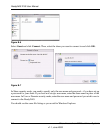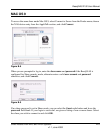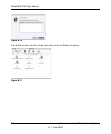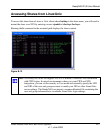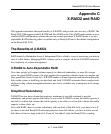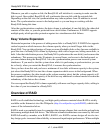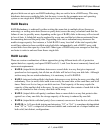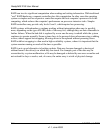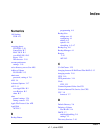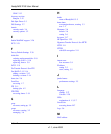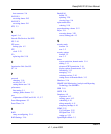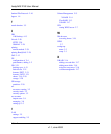
ReadyNAS 2100 User Manual
C-4 X-RAID2 and RAID
v1.1, June 2009
RAID can involve significant computation when reading and writing information. With traditional
“real” RAID hardware, a separate controller does this computation. In other cases the operating
system or simpler and less expensive controllers require the host computer's processor to do the
computing, which reduces the computer's performance on processor-intensive tasks. Simpler
RAID controllers may provide only levels 0 and 1, which require less processing.
RAID systems with redundancy continue working without interruption when one (or possibly
more, depending on the type of RAID) disks of the array fail, although they are then vulnerable to
further failures. When the bad disk is replaced by a new one the array is rebuilt while the system
continues to operate normally. Some systems have to be powered down when removing or adding
a drive; others support hot swapping, allowing drives to be replaced without powering down.
RAID with hot-swapping is often used in high availability systems, where it is important that the
system remains running as much of the time as possible.
RAID is not a good alternative to backing up data. Data may become damaged or destroyed
without harm to the drive(s) on which they are stored. For example, part of the data may be
overwritten by a system malfunction; a file may be damaged or deleted by user error or malice and
not noticed for days or weeks; and, of course, the entire array is at risk of physical damage.



